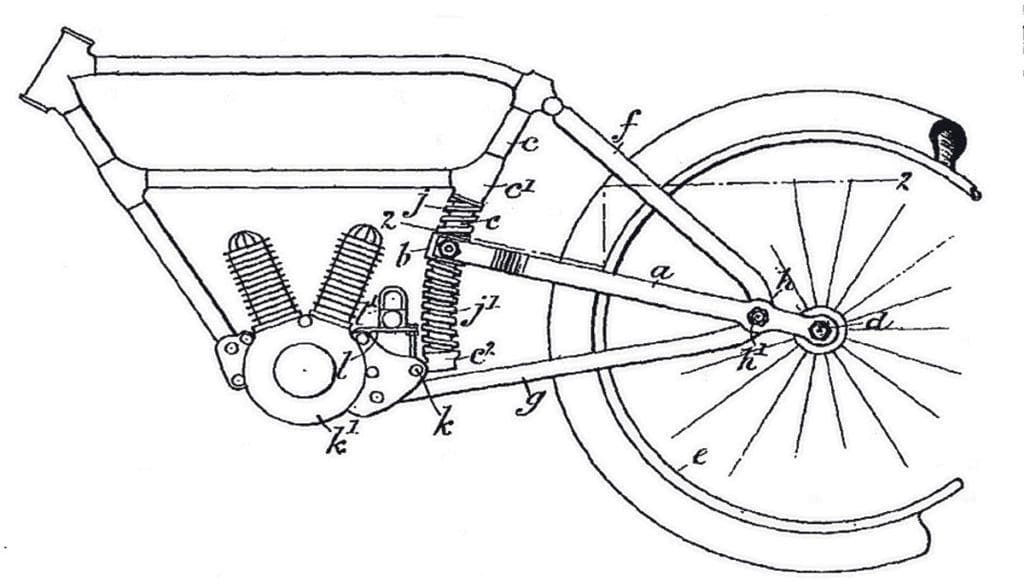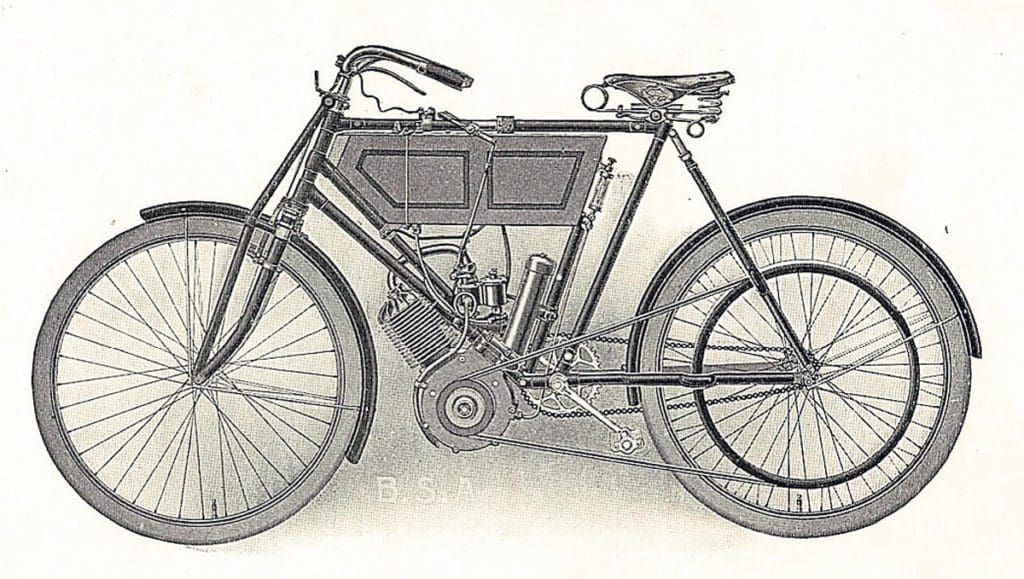Was it the New Imperial? In terms of the first swinging arm frame, I’d argue not.

Rear springing (or a ‘spring frame’ as it was known at the time) goes back to the earliest days of motorcycling. BSA, for example, offered a spring frame machine for 1905, with an articulated rear frame triangle. NSU had an under-saddle monoshock suspension not too long after that.

Other British companies such as PV and Coulson also specialised in rear springing when it was far from the norm: PV from 1910, and Coulson from around 1919. A look at the patent drawings shows a continued reliance on a ‘bicycle-type’ rear frame triangle, with various modifications to add springing (PV a curved saddle tube with springs fitted, Coulson a leaf-spring and bell-crank), the main pivot being just in front of the rear wheel spindle in each case. PV fitted a basic friction damper to the later bikes, which had the springs inside the curved tube.

I’d argue for Matchless, and particularly the system seen on the post-First World War Model H. That departed from the cycle-type rear end, rotating the rear frame triangle and adding an extra pivoting arm (chainstays [a] pivotally secured to the mainframe [b], as the patent spec has it), for something much more relatable for anyone with a later twin-shock rear end on their bike. The Matchless patent was accepted on September 23, 1915, and the system was shown on the H in a press article of July 17, 1919. I attach a few images for illustration.

Nick Smith





